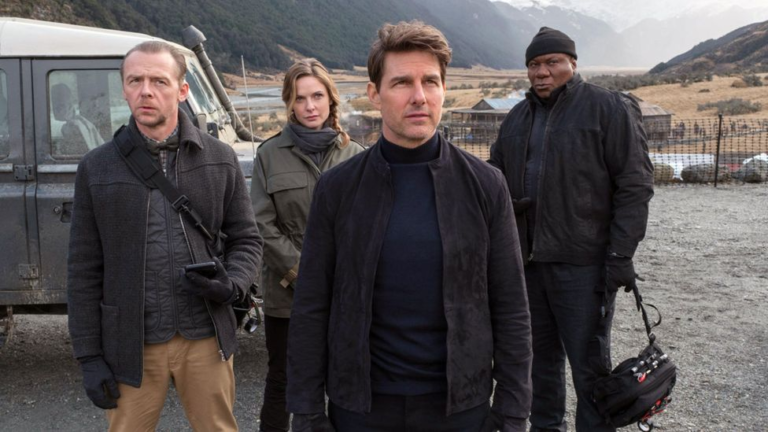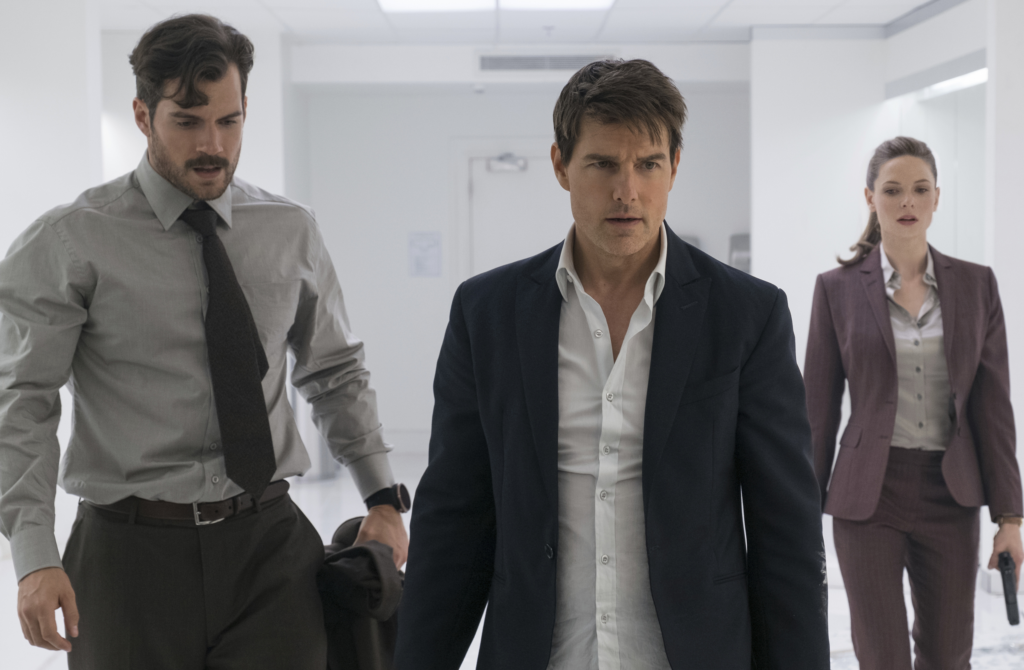
If you want to start an online brawl and decide to ask fans which Mission: Impossible film is their favourite, you will usually get one of three answers: the purists name the first M: I movie as the best that the franchise has to offer – praising the elegance of Brian De Palma’s direction and the twisted plot. Others cite Ghost Protocol (2011), for its humour, the epic stunts on the Burj Khalifa and the unique aesthetic which stems out of director Brad Bird’s background in animation. Finally, you’ll find fans like me, who will cite Fallout (2018) as their favourite film of the franchise. While its director Christopher McQuarrie is no Bird or De Palma, a solid case can still be made that Fallout is the pinnacle of the cinematic series – just let me show you why.
Teamwork at its finest

Unlike other action franchises (the most obvious comparison being, of course, Bond), Mission: Impossible has always centred on a team of spies, and while Ethan Hunt takes most of the cinematic screen time, his teammates Luther (Ving Rhames) and Benji (Simon Pegg) have always had a strong presence in the saga. And of course, Rogue Nation brought us shady British spy Ilsa Faust (Rebecca Ferguson), who has a complex relationship with Hunt and some impressive combat scenes.
Fallout does a near-perfect job of integrating this myriad of characters into the plot: the team is very present throughout Ethan’s adventure, with Luther and Benji able to do more than just some hacking – and the latter even gets to wear two masks! As for Ilsa, she keeps her own agenda, which made her so interesting and unpredictable in Rogue Nation (2015). Here, she butts heads with Ethan and his IMF team as they attempt to free evil mastermind Solomon Lane (Sean Harris) and exchange him for some plutonium spheres. Ilsa has been ordered by MI6 to kill the bad guy, but once again, her love for Ethan and moral compass get in the way.
As mentioned above, Fallout is centred around this myriad of characters, who all have something to do. The movie even adds in returning secretary Hunley (Alec Baldwin), and August Walker (Henry Cavill), a brutal CIA spy whose hidden agenda is revealed partway through the film. All protagonists and antagonists have distinct motivations and goals, and the IMF really feels like what it is – a team. On that account, Fallout’s third act is an excellent example of on-screen teamwork. It takes place in Kashmir, where the heroes attempt to defuse nuclear bombs planted by Walker and Lane. The final act is extremely well-constructed, and sees the entire team working hand in hand with Ethan’s ex-wife Julia to neutralise both villains – the perfect example of an ensemble cast smartly used in an action film.
Between change and continuity: the right action formula?

Among fans, Rogue Nation is generally a more divisive entry than Fallout. While I have a soft spot for RN, I understand why some viewers struggled with its anti-climatic ending (which does not feature any major stunts) and its much darker tone (almost reminiscing of films noirs), so different from Ghost Protocol’s goofiness. Christopher McQuarrie’s second entry strikes a better balance: Fallout’s plot has an innate gravity which makes its stakes believable, but also a cinematography and some large-scale stunts which remain true to the spirit of the Mission: Impossible franchise. Fallout might not be the funniest entry in the saga, but it also will elicit some laughs from viewers (many of which are due to Benji’s antics!).
The action in the film is also a standout, to the point where it would deserve its own article: the movie has some of the best sequences of the entire franchise, and their diversity is especially striking. It isn’t all chases and pursuits here, as we also get some breathtaking skydiving, tense bouldering (a nice nod to M: I II) and of course, many well-choreographed fights. What really makes Fallout’s action sequences impactful is their structure: they do not feel disconnected from the main plot and all have a purpose. On that account, Dead Reckoning Part 1’s stunts will be more divisive. While its chases remain well-crafted, they can get a little repetitive after a while.
In Fallout, the plot dictates the action, not the other way around, and the scenes thus feel more plausible and gripping. A perfect illustration is the pursuit throughout London, which has the always-running Ethan taking off on foot to stop August Walker (Henry Cavill) after realising the latter is nefarious terrorist John Lark. The chase takes place on the roofs and in the streets of the city, and has Hunt running, helped by Benji and his team aboard a van. On top of the incredible BTS story – Cruise broke his ankle on set and kept going – the sequence is breathtaking, and makes it into the pantheon of M: I chases thanks to a single shot. During it, Ethan realises that he is going to have to jump out of a window, and while standing on the edge, gets some encouragement from office workers who saw him burst into their open space. This short scene is perfect: not only is it funny, but it helps to make the action far more impactful. Seeing that even the great Ethan Hunt is afraid of jumping instantly renders the fall tense and meaningful. This is just one of many examples which make Fallout an incredible Mission: Impossible movie as well as an excellent action flick. If you haven’t watched it yet, you definitely need to – if only to get your own ranking of M: I films!